25 Ways to Decrease Insulin Resistance Naturally
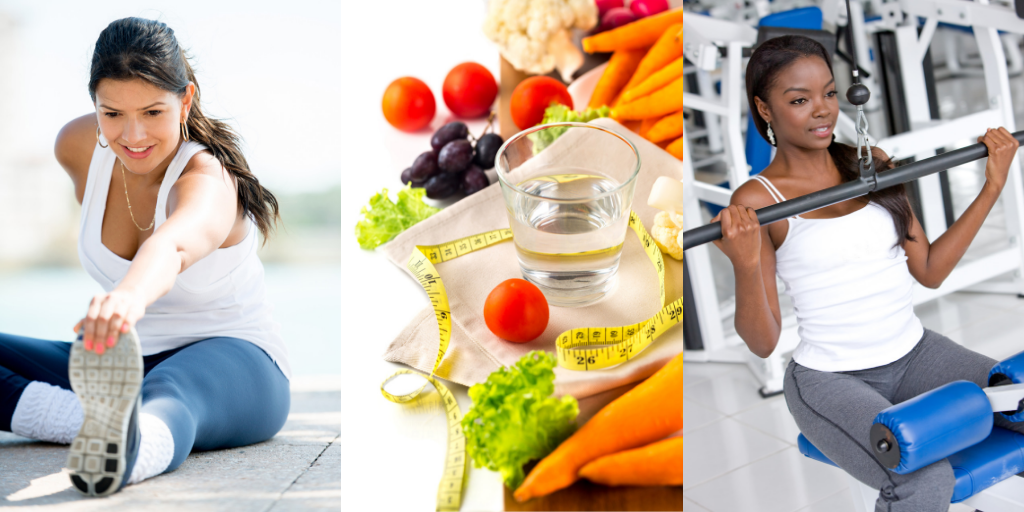
You’ve been told you have insulin resistance. Insulin resistance affects at least 60% of the adult population (and up to 95% of those with PCOS) and is associated with increased risk of type 2 diabetes and heart disease. So what can YOU do about it? You’ve probably read on the internet that you need to cut out carbs or maybe even go keto … gasp! But what’s left to eat? Almost all foods contain carbs including bread, pasta, rice, starchy veggies, fruit, yogurt, and of course, sweets and most snack foods. The good news is that you don’t have to cut out all carbs. And there are many other things you can do to decrease insulin resistance naturally. Read on to get my 22 tips. This is part 3 of my series on Insulin Resistance.
It’s not just about carbs
I find that many people who’ve been diagnosed with insulin resistance get caught up in trying to strictly limit their carbs. This especially true with my patients with PCOS and prediabetes – two of my specialties. After all, we know that carbs raise blood sugar, and elevated blood sugar causes you to secrete insulin. And some people become “resistant” to the insulin, so their bodies have to pump out more and more insulin to keep blood sugar within a normal range. This is called insulin resistance and may lead to type 2 diabetes as well as other health problems.
But here is the mistake: All the focus gets put on CARBS! We might load up on fat and protein in our quest to avoid carbs. Or forget about other lifestyle factors that can INCREASE or DECREASE insulin resistance. Hint: physical activity, getting in daily steps, adequate sleep, stress management, losing even a little bit of weight if overweight … just to name a few.
If you missed my first 2 blogs, I’d suggest you read about Insulin Resistance: What You Need to Know (part one) and How to Test for Insulin Resistance (part two) and then continue reading below.
25 ways to decrease insulin resistance naturally
There are many things you can do naturally to decrease insulin resistance. In fact, a major study called the Diabetes Prevention Program showed that lifestyle intervention had a greater impact in reducing risk of diabetes as compared to medication. I’ve come up with 22 tips to help decrease insulin resistance. Losing weight if overweight and exercise will have the greatest impact, however there are many other things you can do to improve insulin sensitivity. Here are my tips:
DIET/WEIGHT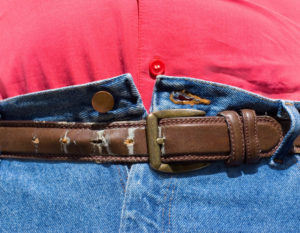
- Choose low glycemic types of carbs. All carbs raise blood sugar. However sugary or processed “white carbs” cause a more rapid spike. Rapid spikes of blood sugar put more demand on the pancreas to make insulin. Low glycemic carbs will cause a slower rise of blood sugar and insulin. Carb sources that are low-GI include dried beans and legumes, all non-starchy vegetables, some starchy vegetables like sweet potatoes, most fruit, and many whole grain breads and cereals (like barley, whole wheat bread, rye bread, and all-bran cereal) High glycemic carbs include: white bread, cornflakes, instant oatmeal, bagels, cakes and other sugary foods.
- Consume carbs in moderation. The updated recommendations of the American Diabetes Association Standards of Care is to reduce the overall amount of carbs consumed. It’s not possible to give specific guidelines for carb quantities as there is no one-size-fits-all approach. While some people prefer to follow a very low carb diet, this does not mean every individual with insulin resistance needs to drastically cut carbs! Your best bet is to avoid eating large amounts of carbs at a time. Spreading your carb intake evenly throughout the day is another way to increase insulin sensitivity. Eating smaller portions of carbs regularly throughout the day provides the body with less sugar at each meal, making insulin’s job easier. This is also supported with research showing that eating regularly benefits insulin sensitivity.
- Adding fat and protein to the carb will slow the rise and fall of blood sugar. For example, adding peanut butter or avocado to a slice of whole wheat toast will help to decrease the glycemic effect of the bread on blood sugar
- Food order. Eating the protein, fat, non-starchy veggies before the carb will help to keep blood sugar levels lower. While this technique is not always practical (ie. dissecting your sandwich or sushi roll!), it can sometimes work! Reference Reference
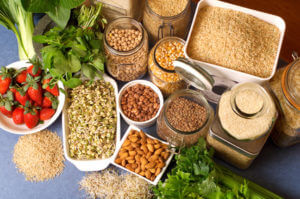 Eat more fiber. Fiber has numerous health effects in the body including decreased risk of cancer, heart disease, diabetes, weight management to name a few. There are many different types of fiber often categorized into 2 major groups: soluble and insoluble (although it’s not quite this simple!) Most foods contain a combination of several different kinds of fiber. Insoluble fiber mostly acts as a bulking agent to help prevent constipation. Soluble fiber helps to lower cholesterol and keep you feeling full. Several studies have found a link between high soluble fiber intake and increased insulin sensitivity.This studyshowed that placing insulin-resistant individuals on a high-fiber diet (50 g) where the fiber comes not from supplements, but from fruits, vegetables, legumes, and selective grains, significantly improves insulin sensitivity after six weeks. A study in 264 women found that those who ate more soluble fiber had significantly lower levels of insulin resistance. Soluble fiber also helps feed the friendly bacteria in your gut, which have been linked to increased insulin sensitivity. Foods that are rich in soluble fiber include legumes, oatmeal, flaxseeds, vegetables like Brussels sprouts and fruits like oranges. Reference
Eat more fiber. Fiber has numerous health effects in the body including decreased risk of cancer, heart disease, diabetes, weight management to name a few. There are many different types of fiber often categorized into 2 major groups: soluble and insoluble (although it’s not quite this simple!) Most foods contain a combination of several different kinds of fiber. Insoluble fiber mostly acts as a bulking agent to help prevent constipation. Soluble fiber helps to lower cholesterol and keep you feeling full. Several studies have found a link between high soluble fiber intake and increased insulin sensitivity.This studyshowed that placing insulin-resistant individuals on a high-fiber diet (50 g) where the fiber comes not from supplements, but from fruits, vegetables, legumes, and selective grains, significantly improves insulin sensitivity after six weeks. A study in 264 women found that those who ate more soluble fiber had significantly lower levels of insulin resistance. Soluble fiber also helps feed the friendly bacteria in your gut, which have been linked to increased insulin sensitivity. Foods that are rich in soluble fiber include legumes, oatmeal, flaxseeds, vegetables like Brussels sprouts and fruits like oranges. Reference- Eat a gut healthy diet that includes plenty of prebiotics. You’re probably familiar with the health benefits of probiotics which include improved immunity, digestive health, mental health, weight control, decreased risk of diabetes, heart disease, and more. But I bet you haven’t heard much about prebiotics … but you will as they are a trending topic. These non-digestible carbohydrates are essential to help “feed” your good bacteria. And most of don’t consume nearly enough of them … especially if you are on a lower carb diet or eat most of your meals on the run. Prebiotics are natural, non-digestible ingredients that stimulate the growth and/or activity of healthy bacteria in the colon. Envision them as fertilizers for watering the “garden” of good bacteria inside your body. If you don’t consume adequate prebiotics, the probiotics can’t function optimally. In addition, studies have demonstrated that prebiotics on their own play important role in weight management, and lowering blood sugar, insulin levels and cholesterol. Read my blog post to learn more about prebiotics, where to find them and the health benefits
- Lose weight if overweight. This may be the most important thing you can do to improve insulin sensitivity. As your fat cells get smaller, they become more sensitive to insulin. This means your body can make less insulin to get the blood sugar into the cells. Not only does save your pancreas from overworking, it will lower the insulin levels in the your blood which decreases health risks. And the good news is that you DON’T have to get to an unrealistic low weight. Even losing 5-7% of your body weight will improve insulin resistance. This study found that people with prediabetes who lost 5–7% of their total weight over six months reduced their risk of type 2 diabetes by 58% for the next three years. For someone who weighs 200 pounds, that is a loss of around 10-20 pounds.
- Lose belly fat. Excess weight in the belly area (also called visceral fat), reduces insulin sensitivity and increases the risk of type 2 diabetes. Visceral fat makes hormones that promote insulin resistance in the muscles and liver. Many studies support the link between higher amounts of belly fat and lower insulin sensitivity. Unfortunately, there is no way to target weight loss in certain areas like the belly. So forget about doing 100 crunches a day or taking Cortislim supplements! But the good news is that as you lose weight, the visceral fat in the abdominal area will decrease as well. Reference
- Other factors can have an effect on the glycemic index.
-Let some starchy foods cool. For example, a potato that has been cooked then cooled, has a lower glycemic index than a hot one (even if you reheat it again!). The same goes for rice and pasta. This is due to formation of resistant starch when these foods have been cooled.
–Ripeness and storage time. The more ripe a fruit or vegetable is, the higher the GI
-Processing. Juice has a higher GI than whole fruit; mashed potato has a higher GI than a whole baked potato, stone ground whole wheat bread has a lower GI than whole wheat bread.
-Cooking method. How long a food is cooked. For example, al dente pasta has a lower GI than well-cooked pasta
EXERCISE  Regular exercise is one of the best ways to increase insulin sensitivity. When you’re active, your muscle cells “pull” sugar out of the blood and bring it into the cell to be used for energy. So your body doesn’t have to make as much insulin to “open the cell doors”. This increases insulin sensitivity for 2-48 hrs, depending on the exercise. One study found that 60 minutes of cycling on a machine at a moderate pace increased insulin sensitivity for 48 hours among healthy volunteers. In another study, sedentary, insulin-resistant, middle-aged adults who engaged in 30 minutes of moderate walking three to seven days per week for six months succeeded in reversing their insulin resistance — without changing their diets or losing any body weight (although their body proportions of fat and muscle likely changed for the better).
Regular exercise is one of the best ways to increase insulin sensitivity. When you’re active, your muscle cells “pull” sugar out of the blood and bring it into the cell to be used for energy. So your body doesn’t have to make as much insulin to “open the cell doors”. This increases insulin sensitivity for 2-48 hrs, depending on the exercise. One study found that 60 minutes of cycling on a machine at a moderate pace increased insulin sensitivity for 48 hours among healthy volunteers. In another study, sedentary, insulin-resistant, middle-aged adults who engaged in 30 minutes of moderate walking three to seven days per week for six months succeeded in reversing their insulin resistance — without changing their diets or losing any body weight (although their body proportions of fat and muscle likely changed for the better).
Both resistance training and aerobic exercise help increase insulin sensitivity in different ways. Aerobic activities burn more calories (and glucose) per session, but resistance training builds muscle, which is what burns glucose during exercise, so having more is better.
Tip: The best exercise plan for insulin resistance as well as overall health includes aerobic and strength training (as well as stretching). Aim for at least 30 minutes, 5 days of aerobic exercise and strength training 2x/wk. But it’s also important to listen to your body, especially if y0u have PCOS. For example, some people find that very vigorous exercise can actually act as a stressor which can then worsen symptoms. It is important for everyone to talk to a doctor before beginning any new exercise plan, especially if it has been a while since they
aerobic exercise and strength training 2x/wk. But it’s also important to listen to your body, especially if y0u have PCOS. For example, some people find that very vigorous exercise can actually act as a stressor which can then worsen symptoms. It is important for everyone to talk to a doctor before beginning any new exercise plan, especially if it has been a while since they
were physically activity. Reference 1 Reference 2 Reference 3
LIFESTYLE/STRESS/SLEEP- Less sitting time.We know that we need to be more active, but there is increasing evidence that we also need to spend less time sitting down. Studies have linked excessive sitting with being overweight and obese, type 2 diabetes, some types of cancer, and early death. Sitting for long periods is thought to slow the metabolism, which affects the body’s ability to regulate blood sugar, blood pressure and break down body fat. According the American Diabetes Association, prolonged sitting should be interrupted every 30 minutes for blood glucose benefits. This study showed reallocating a small amount of short or prolonged sitting time with standing or stepping may improve 2-hour glucose, fasting and 2-hour insulin and insulin sensitivity.
- Reduce stress. Stress has many negative effect on the body including worsening blood sugar
 control and insulin resistance. When you’re in stress mode, your body perceives it as “fight or flight”. This stimulates the production of stress hormones like cortisol and glucagon, which in turn breaks down a stored form of sugar called glycogen. This sugar enters your blood and raises blood sugar. Many studies have found that high levels of stress hormones on an ongoing basis reduces insulin sensitivity. Tip: Find activities that help you moderate stress, whether it be reading a book, doing yoga, listening to music or meditating!
control and insulin resistance. When you’re in stress mode, your body perceives it as “fight or flight”. This stimulates the production of stress hormones like cortisol and glucagon, which in turn breaks down a stored form of sugar called glycogen. This sugar enters your blood and raises blood sugar. Many studies have found that high levels of stress hormones on an ongoing basis reduces insulin sensitivity. Tip: Find activities that help you moderate stress, whether it be reading a book, doing yoga, listening to music or meditating!
- Get more sleep. Inadequate sleep is linked to many health issues, including heart disease, weight gain, compromised immune system, type 2 diabetes and insulin resistance. This study showed that getting 4 hours of sleep 4 nights in a row decreased insulin sensitivity by 30%. Getting plenty of sleep each day can help to regulate the hormones associated with feeling hungry, and to reduce the risk of glucose metabolism dysfunction. Tip: Get at least 7 hours of sleep a night.
 Take a walk after meals. A 2016 study of people with type-2 diabetes found that just 10 minutes of walking after a meal helped control their blood sugar levels. The biggest decrease in blood sugar occurred when walking after dinner time compared to other times of the day. This may in part be due to the body being less efficient at metabolizing glucose in the evening as compared to the morning. It may also be due the fact that most us tend to sit around more after dinner as compared to breakfast or lunch … or maybe because people tend to snack more at night. In addition, it lowers triglyceride levels, it improves digestion, burns calories and can help you lose weight. Reference
Take a walk after meals. A 2016 study of people with type-2 diabetes found that just 10 minutes of walking after a meal helped control their blood sugar levels. The biggest decrease in blood sugar occurred when walking after dinner time compared to other times of the day. This may in part be due to the body being less efficient at metabolizing glucose in the evening as compared to the morning. It may also be due the fact that most us tend to sit around more after dinner as compared to breakfast or lunch … or maybe because people tend to snack more at night. In addition, it lowers triglyceride levels, it improves digestion, burns calories and can help you lose weight. Reference
SPECIFIC FOODS/FOOD COMPONENTS- Eat foods rich in polyphenols. Polyphenols are plant chemicals found in almost all fruit and vegetables. They have antioxidant, anti-inflammatory, anti-carcinogenic and other biological properties, and may protect from oxidative stress and some diseases. For example, polyphenols derived from green tea, cocoa (yes – dark chocolate. At least 70% or higher) and apples are emerging as powerful facilitators of insulin responses as well as being potent anti-inflammatory compounds. Blueberries are rich sources of polyphenols and epidemiological and clinical studies are suggesting they decrease insulin resistance. Resveratrol is a polyphenol found in the skin of red grapes and other berries as well as in red wine. It may increase insulin sensitivity, especially in those with type 2 diabetes.
- Magnesium is a mineral that can’t be made in the body so you need to consume adequate
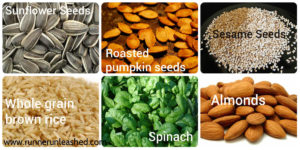 amounts daily. Every organ in the body needs it – especially the heart, muscles, and kidneys. Magnesium, the 4th most abundant mineral in the body in involved in over 300 enzymatic reactions. Low magnesium levels are associated with many chronic diseases including insulin resistance and type 2 diabetes. Research suggests that magnesium plays a vital role in insulin signaling and regulation of glucose of uptake by the cells. A deficiency may therefore worsen insulin sensitivity and reduce glucose tolerance. Studies did in fact, find that improving magnesium levels can improve insulin sensitivity and consequently lower blood sugar levels. Include some magnesium rich foods into your diet including leafy greens like spinach, almonds, cashews, halibut and cacao (or dark chocolate) are great sources. If you don’t like these foods, consider a supplement. Even the federal government admits that many Americans do not obtain the recommended amount of magnesium, which is 320 mg/day for women and 420 mg/day for men. Reference
amounts daily. Every organ in the body needs it – especially the heart, muscles, and kidneys. Magnesium, the 4th most abundant mineral in the body in involved in over 300 enzymatic reactions. Low magnesium levels are associated with many chronic diseases including insulin resistance and type 2 diabetes. Research suggests that magnesium plays a vital role in insulin signaling and regulation of glucose of uptake by the cells. A deficiency may therefore worsen insulin sensitivity and reduce glucose tolerance. Studies did in fact, find that improving magnesium levels can improve insulin sensitivity and consequently lower blood sugar levels. Include some magnesium rich foods into your diet including leafy greens like spinach, almonds, cashews, halibut and cacao (or dark chocolate) are great sources. If you don’t like these foods, consider a supplement. Even the federal government admits that many Americans do not obtain the recommended amount of magnesium, which is 320 mg/day for women and 420 mg/day for men. Reference 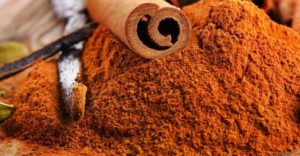 Cinnamon. Cinnamon is a spice that may aid in insulin sensitivity by several mechanisms. It works by slowing down carbohydrate absorption, decreasing insulin resistance by the cells, increasing glucose uptake by cells and decreasing glucose production by the liver. It also has anti-inflammatory properties which may play a role in preventing or reducing the progression of diabetes. It has even been shown to lower LDL cholesterol and increase HDL – a bonus for diabetics with poor lipid parameters. Even as little as <1-6g (0.5-2 tsp) of cinnamon can be a safe an effective amount per day.
Cinnamon. Cinnamon is a spice that may aid in insulin sensitivity by several mechanisms. It works by slowing down carbohydrate absorption, decreasing insulin resistance by the cells, increasing glucose uptake by cells and decreasing glucose production by the liver. It also has anti-inflammatory properties which may play a role in preventing or reducing the progression of diabetes. It has even been shown to lower LDL cholesterol and increase HDL – a bonus for diabetics with poor lipid parameters. Even as little as <1-6g (0.5-2 tsp) of cinnamon can be a safe an effective amount per day.
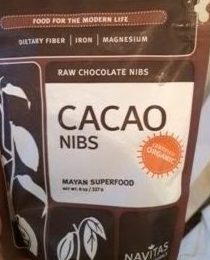
- Vinegar. Several studies have found that consumption of vinegar along with a carbohydrate rich meal helps lower post meal glucose levels. Another study found that consuming two tablespoons of ACV at bedtime resulted in lower fasting glucose the next morning. Researchers suggest that the acetic acid in vinegar slows down carbohydrate absorption, improves insulin sensitivity,, and possibly decreases glucose production by the liver. One study found that consuming apple cider vinegar increased insulin sensitivity by 34% during a high-carb meal in people who were insulin resistant and by 19% in people with type 2 diabetes. Reference
SUPPLEMENTS
Certain supplements may help lower blood sugar and improve insulin resistance. However, keep in mind that supplements aren’t regulated by the FDA. It’s important that you discuss any supplement use with your physician especially if you are taking medications or have medical issues. Of note, American Diabetes Association does not promote supplements for blood sugar control. - Berberine: A plant molecule extracted from a variety of herbs including the plant Berberis. Berberine is a potent insulin sensitizer that rivals that of metformin. It targets a very basic regulator of metabolism called AMPK-activated protein kinase (AMPK) activation that works to: stimulate the uptake of glucose into the cells, improve insulin sensitivity, reduce glucose production in the liver, slows the release of free fatty acids, which lowers lipid levels and prevents harmful fat deposition, boosts fat burning in the mitochondria, stimulates the release of nitric oxide (NO), a signaling molecule that relaxes the arteries, increases blood flow and lowers blood pressure, and protects against atherosclerosis. This information comes from a site for women with PCOS, but the benefits would apply to anyone with Insulin resistance. Reference In addition, berberine has a favorable effect on the gut microbiome, which may account in part for the its mechanism of action. This supplement is not recommended if pregnant.
- Chromium: This is a micronutrient that is known to produce healthy insulin signaling in cells. Some evidence suggests it may down regulate proteins involved in insulin resistance. It may also help reduce oxidative stress and inflammation. However studies in humans have been mixed. One study in people with prediabetes showed it was unlikely it would be helpful in preventing diabetes. Another study in people with type 2 diabetes showed chromium may be helpful if there was a chromium deficiency. Animal studies have showed more promising results than human trials. Best best at this time may be to chromium from food sources including broccoli, barley, oats, garlic, potatoes, oranges. Reference: Todays Dietitian Jan 2019 p. 49. Best forms of supplements include chromium picolinate and chromium GTF. Reference
- Alpha-lipoic acid is an antioxidant. Among its many benefits, it may be protective of pancreatic beta cells and support insulin sensitivity. It has the ability, like insulin, to stimulate glucose uptake and metabolism. One study found that 600 mg/day of alpha-lipoic acid improved insulin sensitivity and increased ovulation rates (in PCOS) Reference
- Inositol. Inositol is a B-vitamin-like nutrient the occurs naturally in whole grains, beans, nuts, and fruits. The human body also makes inositol and it is available as a dietary supplement. There are nine types of inositol occurring in nature. Two forms, myo-inositol and D-chiro-inositol, have specific functions in our cells. Over the last several years, research has found that a certain ratio of these two forms seems to work better than either form alone. That ratio is 40 to 1, meaning forty parts myo-inositol to one part D-chiro-inositol (my favorite brand is Ovasitol as it contains this ratio. I pretty much recommend it to all my patients with PCOS). Studies show that inositol improves the risk factors of metabolic syndrome. Inositol works by helping the body use insulin. Insulin is a hormone made by the pancreas and released into the bloodstream. Insulin allows our cells to take in glucose (sugar) and produce energy. People who have insulin resistance do not properly release secondary messengers (like inositol). Glucose does not get into the cell efficiently. Therefore, glucose in the blood remains high, which tells the pancreas to make more insulin. The over-production of insulin results in both high insulin levels and high blood sugar.Taking an inositol supplement can help with insulin signaling, resulting in less insulin resistance, and lower blood sugar and insulin levels. One study demonstrated that inositol lowered blood pressure, blood sugar, triglycerides, and total cholesterol, and increased HDL cholesterol, in postmenopausal women with metabolic syndrome. All this info above obtained from this Reference
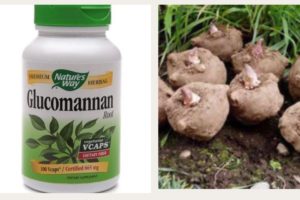 Glucomannan is a fiber extract from the root of the Asian konjac plant. Glucomannan contains mainly soluble fiber – also called viscous and fermentable fiber. When consumed, these gels help to prevent cholesterol from being absorbed, slows the rise of blood sugar and dampens insulin response after a meal up to 50%. They also help make you feel full which can aid in weight loss.
Glucomannan is a fiber extract from the root of the Asian konjac plant. Glucomannan contains mainly soluble fiber – also called viscous and fermentable fiber. When consumed, these gels help to prevent cholesterol from being absorbed, slows the rise of blood sugar and dampens insulin response after a meal up to 50%. They also help make you feel full which can aid in weight loss. - Vitamin D. Low levels of Vit D are associated with insulin resistance so it’s important that you keep your levels in an ideal zone of 30-60. While you can make Vit D when exposed to sunlight, it’s difficult to obtain from food. Most people need a Vit D supplement. The Vitamin D Council places the ideal level between 40 and 80 ng/mL
MEDICATION
While this post is about ways to naturally improve insulin resistance, it’s worth mentioning this medication. Metformin, an insulin sensitizer, is the most commonly prescribed drug for type 2 diabetes. In addition, it’s often used with patients with prediabetes and PCOS. It works by reducing the rate of hepatic glucose production and by improving insulin sensitivity in the skeletal muscle. Think of it as helping to open the door to get the glucose into the cell. This helps your pancreas to make less insulin. It may also have a favorable effect on the gut microbiome. Compared with other drugs for diabetes, it’s less likely to produce hypoglycemia and has fewer side effects. Of note, it can cause GI symptoms of diarrhea in some patients as well as Vit B12 deficiency. Make sure to consume it with meals and increase your dose slowly to allow your body to get used to it. And get your B12 levels checked on a regular basis and supplement as needed.
Bottom line
 It’s estimated that at least 65% of the population has some degree of insulin resistance and up to 95% of those people with PCOS. This condition increases risk of heart disease and type 2 diabetes. The good news is that there are many things you can do from a lifestyle standpoint to decrease insulin resistance … and some of them can even be fun!|
It’s estimated that at least 65% of the population has some degree of insulin resistance and up to 95% of those people with PCOS. This condition increases risk of heart disease and type 2 diabetes. The good news is that there are many things you can do from a lifestyle standpoint to decrease insulin resistance … and some of them can even be fun!|
updated 11.23
Need help in managing your PCOS?
With over 15 years’ experience specializing in nutrition for PCOS, I understand your frustration and confusion, and together we’ll work through it. After all, knowledge leads to empowerment! Using your labs and symptoms, we’ll figure out your PCOS “drivers” and use that to guide your treatment plan. We’ll set goals and I’ll help you create a nutrition and lifestyle plan tailored to you, including exercise and supplement recommendations as well as tips for stress management and improved sleep. We’ll also make to sure take into account your food preferences and lifestyle. And don’t worry – if you don’t like to spend time in the kitchen, we’ll do meal planning for quick meals or on the go options. The goal is a plan that is sustainable over time, so that you can keep feeling great for years to come.
Learn more about my PCOS coaching packages HERE then if you are potentially interested in working with me, we’ll schedule a call to see if we are a fit to work together and which coaching package would be best for you
RELATED POSTS
MEET MARTHA
I especially love problem-solving, whether it’s helping women defeat issues plaguing them for years, helping a busy executive find practical ways to get heart healthy, or providing tips to help you reverse diabetes. That’s why I’m on a constant quest to expand my knowledge by staying on top of the latest research.
5 Comments
Leave a Comment
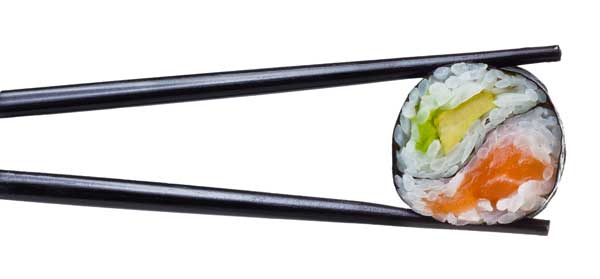
20 Ways To Eat Out 550 Calories or Less!
No time to cook? We’ve got you covered. Here are 20 healthy meals from a variety of cuisines that won’t pack on the pounds. Most of them also have less than 30 grams of carbs.
Subscribe to my newsletter and get this free download.





What a great article. This was well written and easy to read. Much appreciated.
VDERY NICE AND COMPREHENSIVE… I CAN CONFIRM THAT MOST OF WHAT YOU WROTE HAS SOLID CLINICAL STUDY TO BACK IT UP… CONGRATS
Best read yet on the topic. Thanks!
Big problem. If you are insulin resistant you cannot lose weight. Weight is a symptom not the cause and you can’t lose weight. Any attempts to lose weight will result in very little loss followed by your body fighting back and putting the weight back on plus more.
Hello y’all i’m here to share with yall bout Dr okosun for his marvelous work in my life, my name is robin nicole I was diagnosed of HERPES since 2015 and I was taking my medications, and nothing seems to change only just suppressing the herpes, but i wanted to get rid of the virus out my system, I searched about some possible cure for HERPES online and that was when i came across a comment about Dr Okosun how he cured HERPES with his herbal medicine, I contacted him and he guided me. I asked for solutions, he started the remedy for my health, he sent me the medicine through the FedEx delivery service. I took the medicine as prescribed by him and 4 weeks later i was cured from HERPES, I went to different hospitals for confirmation to be actually sure if my sickness was gone and to my surprise all my results were negative, Dr.okosun
truly you are great, and i know thousands of people needs this help as well and i will drop his info, drokosun55@gmail .com
whatsapp +2349117617336